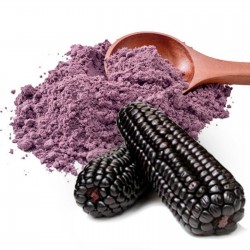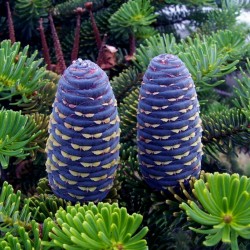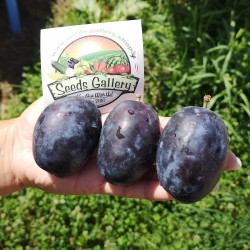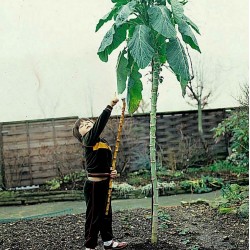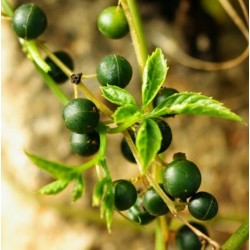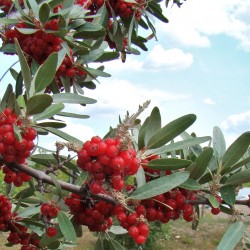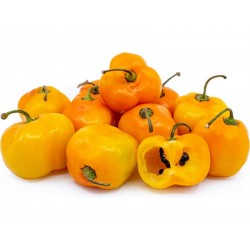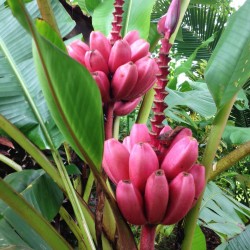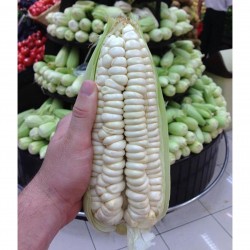
Worlds Largest Giant Corn...
Cena
2,25 €
SKU: P 279
Seeds Gallery Com,
5/
5
<!DOCTYPE html>
<html>
<head>
<meta http-equiv="Content-Type" content="text/html; charset=UTF-8" />
</head>
<body>
<h2><strong>Worlds Largest Giant Corn Seeds Cuzco</strong></h2>
<h2><span style="color: #ff0000;"><strong>Price for Package of 5 or 10 seeds.</strong></span></h2>
<p><span style="font-size: 14pt; font-family: georgia, palatino, serif; color: #000000;">Native to Peru and Ecuador Peruvian Giant Corn - also known as Choclo is a hideously large variety of corn.</span></p>
<p><span style="font-size: 14pt; font-family: georgia, palatino, serif; color: #000000;">The stalks reach up to 5 - 5,50 meters in height, a runt in a litter of this cultivar would tower over standard varieties at a whopping 4 metars.</span></p>
<p><span style="font-size: 14pt; font-family: georgia, palatino, serif; color: #000000;">In standard varieties of corn the average weight runs from 25 - 35 grams per 100 kernels In Peruvian Giant Corn the weight per 100 kernels runs from 90 - 95 grams per 100 kernels - that's nearly 3 times the size and yield.</span></p>
<p><span style="font-size: 14pt; font-family: georgia, palatino, serif; color: #000000;">It is a late maturing corn and is estimated to need 120 - 150 days to mature. They are not an easy crop to produce, it requires determination and vigilance to grow.</span></p>
<p><span style="font-size: 14pt; font-family: georgia, palatino, serif; color: #000000;">One would think being indigenous to the Andes mountainous they would be adapted to windy conditions, but this is not the case. They evolved in the Peruvian Urrabamba Valley and vicinity which is sheltered and has relatively mild weather.</span></p>
<p><span style="font-size: 14pt; font-family: georgia, palatino, serif; color: #000000;">Peruvian Giant Corn aka Choclo </span><br /><span style="font-size: 14pt; font-family: georgia, palatino, serif; color: #000000;">They do not withstand strong winds and need persistent staking, at 4 - 5,50 metars in height that's a chore and a half.</span></p>
<p><span style="font-size: 14pt; font-family: georgia, palatino, serif; color: #000000;">The plants produce numerous relatively short cobs with gigundous kernels.</span></p>
<p><span style="font-size: 14pt; font-family: georgia, palatino, serif; color: #000000;">The taste is comparable to standard sweet corn. It is not overly sweet - mild to blandly sweet with a creamy texture would be the best description. Peruvians usually boil them. In Ecuador and Bolivia they dry them first then burst or "pop" them in oil - somewhat like popcorn. We gringos can enjoy them the same as any other corn.</span></p>
<p><span style="font-size: 14pt; font-family: georgia, palatino, serif; color: #000000;">Corn Should be planted in blocks as opposed to rows and should not be planted near other varieties of Corn [See - Isolating Sweet Corn.] Cross pollination tends to produce poor tasting starchy corn. Sugar Pearl, as per some suppliers does not need to be isolated as other varieties do - this is just fine for the Sugar Pearl, but not necessarily the other variety.</span></p>
<p><span style="font-size: 14pt; font-family: georgia, palatino, serif; color: #000000;">Peruvian Giant Corn can be seeded directly into the soil, or it can also be started indoors and later transplanted. If starting indoors be sure you have a larger than standard container as it could easily outgrow the container before transplant time. Whichever you choose, Plant it in blocks, at least four rows wide, for proper pollination and well-filled ears</span></p>
<p><span style="font-size: 14pt; font-family: georgia, palatino, serif; color: #000000;">Sowing depth Aprox.: 5 cm</span><br /><span style="font-size: 14pt; font-family: georgia, palatino, serif; color: #000000;">Germination: 6 to 8 days</span><br /><span style="font-size: 14pt; font-family: georgia, palatino, serif; color: #000000;">Maturity: at 120 - 150 days.</span><br /><span style="font-size: 14pt; font-family: georgia, palatino, serif; color: #000000;">Color: White - Pale Yellow</span><br /><span style="font-size: 14pt; font-family: georgia, palatino, serif; color: #000000;">Seed Spacing: 30-35 cm apart.</span><br /><span style="font-size: 14pt; font-family: georgia, palatino, serif; color: #000000;">Row spacing: 100 cm</span><br /><span style="font-size: 14pt; font-family: georgia, palatino, serif; color: #000000;">USDA Hardiness Zones: 3- 9</span><br /><span style="font-size: 14pt; font-family: georgia, palatino, serif; color: #000000;">Plant Size: 400 - 550 cm</span><br /><span style="font-size: 14pt; font-family: georgia, palatino, serif; color: #000000;">Corn cob Size: 17-20 cm Long</span><br /><span style="font-size: 14pt; font-family: georgia, palatino, serif; color: #000000;">Full Sun</span></p>
<p><span style="font-size: 14pt; font-family: georgia, palatino, serif; color: #000000;">Above Average Yields per Sq. Footage - Anticipate 3 or more ears per Stalk.</span></p>
<p><span style="font-size: 14pt; font-family: georgia, palatino, serif; color: #000000;">Corn has shallow roots, and uses a lot of nitrogen as well as trace elements. To help your crop get off to the best start possible, prepare the soil first with a nitrogen-rich fertilizer. Well rotted manure or compost is also helpful.</span></p>
<p><span style="font-size: 14pt; font-family: georgia, palatino, serif; color: #000000;">Plant in the northern side of the garden as corn stalks will deny sunlight to the rest of your garden crops ,you also might want to grow some where it will provide shade to plants that can not tolerate full sunlight.</span></p>
<div>
<h2><a href="https://www.seeds-gallery.shop/en/home/peruvian-giant-red-sacsa-kuski-corn-seeds.html" target="_blank" title="Peruvian Giant Red Sacsa Kuski Corn Seeds, you can buy HERE" rel="noreferrer noopener"><strong>Peruvian Giant Red Sacsa Kuski Corn Seeds, you can buy HERE</strong></a></h2>
</div>
</body>
</html>
P 279 5S NS






